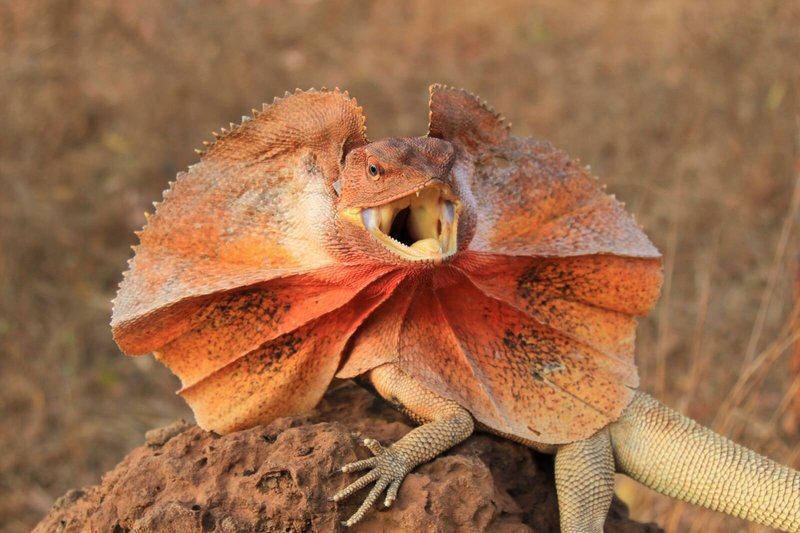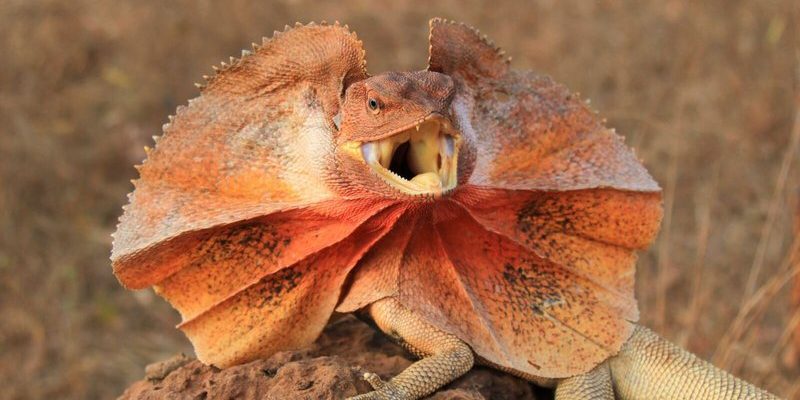
So, how exactly do frilled lizards raise their young? Well, it starts with understanding their unique reproductive habits and environment. These lizards, native to Australia and New Guinea, lead a life that’s heavily influenced by their surroundings, and their parenting methods reflect that. It’s a story of survival, instinct, and the sheer beauty of nature’s designs.
The Mating Rituals of Frilled Lizards
Before we dive into parenting, let’s talk about how these frilled lizards even get to the point of raising young ones. Male frilled lizards are known for their elaborate courtship displays. They perform a series of movements that include puffing up their frills, bobbing their heads, and even changing colors to attract a mate. Picture a dance-off in the animal kingdom! The more impressive the display, the more likely they are to woo a female.
Once they find a mate, the female will lay her eggs in a carefully chosen spot. This can happen during the warmer months when food is plentiful. Frilled lizards have a unique habit of laying their eggs in sandy soil, which allows them to bury the eggs for protection. This choice is crucial for the survival of the young, as it keeps them hidden from predators.
Incubation: The Waiting Game
After laying eggs, the waiting begins. The female frilled lizard doesn’t stick around to guard her eggs, which might seem alarming at first. Instead, she relies on nature to do its job. The eggs typically hatch after about 60 to 80 days. During this time, they’re left to incubate in the warmth of the soil.
It’s fascinating to note that temperature plays a critical role in this process. Higher temperatures can result in male hatchlings, while cooler temperatures may produce females. This is a clever survival mechanism; by regulating the temperature of the nest, nature ensures that the next generation has the best chance at thriving in their environment.
Baby Frilled Lizards: A Quick Start in Life
Once the eggs hatch, the baby frilled lizards, known as hatchlings, are pretty independent right from the get-go. They break out of their eggs and instinctively start moving around to find shelter and food. Unlike many species that rely heavily on their parents for survival, baby frilled lizards are already mini versions of their parents, equipped with their own means to navigate the world.
They primarily eat insects, which they hunt down with surprisingly good agility for such small creatures. Their ability to fend for themselves so quickly is a significant adaptation, given the number of predators lurking around—like birds of prey and even larger reptiles.
Self-Reliance: A Critical Skill
You might be wondering about the level of parental care these young lizards receive. Here’s the thing: after laying the eggs, frilled lizards do not offer any nurturing. This means that from the moment they hatch, the young lizards must rely on their instincts to survive. In the wild, there’s no hand-holding here.
This self-reliance is vital. Baby frilled lizards face numerous challenges, from finding food to avoiding predators. They often stay hidden in the underbrush or climb trees to escape. Their natural camouflage helps them blend into the environment, making it harder for predators to spot them.
The Role of Environment in Raising Young
The environment plays a huge role in the survival of frilled lizard hatchlings. They thrive in habitats that provide plenty of cover and food. These lizards prefer the forests and woodlands of Australia, where they can easily dart up trees or hide among the leaves. This is critical, especially in a world filled with dangers.
The ecosystem is their partner in parenting. The availability of insects and shelter determines how well the young lizards will do. In a healthy ecosystem, they can find plenty to eat and safe places to hide. However, habitat degradation can drastically affect their survival rates, making the conservation of their environments essential.
Survival and Growth: The Next Steps
As the hatchlings grow, they’ll undergo several molts as they develop. This is a crucial stage where they transition from vulnerable baby lizards into their adult forms. During this time, they continue honing their skills of foraging and evasion.
Interestingly, the growth period can last up to a year before they reach sexual maturity. It’s amazing to think about the journey they’ve taken—from tiny, helpless hatchlings to fully-grown adults capable of courtship displays just like their parents.
Raising young frilled lizards in the wild is a beautiful demonstration of nature’s raw efficiency. From the intricate mating rituals to the independence of the hatchlings, every aspect reflects a practical survival strategy. It’s less about nurturing in the traditional sense and more about laying a foundation for the next generation to thrive on their own.
So, the next time you see a frilled lizard flaunting its impressive frill, remember the incredible journey behind its survival. It’s a testament to the wonders of nature, where even the most independent creatures manage to find their way. The lifecycle of frilled lizards reminds us that sometimes, letting go is just as important as nurturing.

